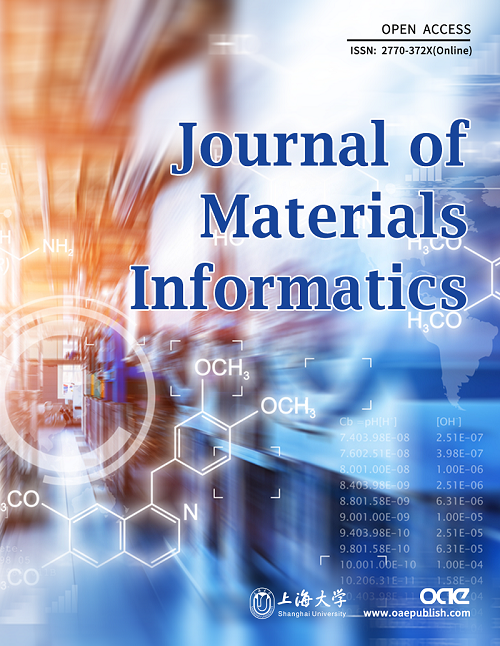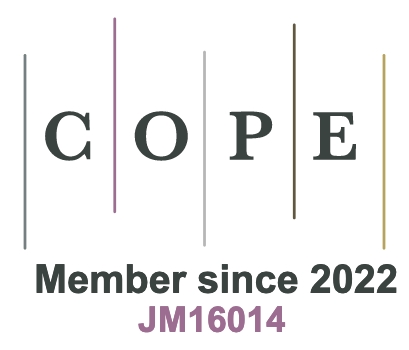REFERENCES
2. Wang QH, Kalantar-Zadeh K, Kis A, Coleman JN, Strano MS. Electronics and optoelectronics of two-dimensional transition metal dichalcogenides. Nat Nanotechnol 2012;7:699-712.
3. Balandin AA, Ghosh S, Bao W, et al. Superior thermal conductivity of single-layer graphene. Nano Lett 2008;8:902-7.
4. Zhao LD, Lo SH, Zhang Y, et al. Ultralow thermal conductivity and high thermoelectric figure of merit in SnSe crystals. Nature 2014;508:373-7.
5. Prashantha Kumar HG, Anthony Xavior M. Graphene reinforced metal matrix composite (GRMMC): a review. Procedia Eng 2014;97:1033-40.
6. Lee C, Li Q, Kalb W, et al. Frictional characteristics of atomically thin sheets. Science 2010;328:76-80.
7. Li S, Li Q, Carpick RW, et al. The evolving quality of frictional contact with graphene. Nature 2016;539:541-5.
8. Chang K, Liu J, Lin H, et al. Discovery of robust in-plane ferroelectricity in atomic-thick SnTe. Science 2016;353:274-8.
9. Fei Z, Zhao W, Palomaki TA, et al. Ferroelectric switching of a two-dimensional metal. Nature 2018;560:336-9.
10. Guan Z, Hu H, Shen X, et al. Recent progress in two-dimensional ferroelectric materials. Adv Elect Mater 2020;6:1900818.
12. Bao Y, Song P, Liu Y, et al. Gate-tunable in-plane ferroelectricity in few-layer SnS. Nano Lett 2019;19:5109-17.
13. Fei R, Li W, Li J, Yang L. Giant piezoelectricity of monolayer Group IV monochalcogenides: SnSe, SnS, GeSe, and GeS. Appl Phys Lett 2015;107:173104.
14. Fei R, Kang W, Yang L. Ferroelectricity and phase transitions in monolayer group-IV monochalcogenides. Phys Rev Lett 2016;117:097601.
15. Mehboudi M, Fregoso BM, Yang Y, et al. Structural phase transition and material properties of few-layer monochalcogenides. Phys Rev Lett 2016;117:246802.
16. Wang H, Qian X. Two-dimensional multiferroics in monolayer group IV monochalcogenides. 2D Mater 2017;4:015042.
17. Botu V, Batra R, Chapman J, Ramprasad R. Machine learning force fields: construction, validation, and outlook. J Phys Chem C 2017;121:511-22.
18. Botu V, Ramprasad R. Adaptive machine learning framework to accelerate ab initio molecular dynamics. Int J Quantum Chem 2015;115:1074-83.
19. Zong H, Pilania G, Ding X, Ackland GJ, Lookman T. Developing an interatomic potential for martensitic phase transformations in zirconium by machine learning. npj Comput Mater 2018;4:48.
20. Yang Y, Zhao L, Han CX, et al. Taking materials dynamics to new extremes using machine learning interatomic potentials. J Mater Inf 2021;1:10.
21. Botu V, Ramprasad R. Learning scheme to predict atomic forces and accelerate materials simulations. Phys Rev B 2015;92:094306.
23. Kohn W, Sham LJ. Self-consistent equations including exchange and correlation effects. Phys Rev 1965;140:A1133-8.
24. Kresse G, Furthmüller J. Efficiency of ab-initio total energy calculations for metals and semiconductors using a plane-wave basis set. Comput Mater Sci 1996;6:15-50.
25. Kresse G, Hafner J. Ab initio molecular dynamics for liquid metals. Phys Rev B Condens Matter 1993;47:558-61.
26. Perdew JP, Burke K, Ernzerhof M. Generalized gradient approximation made simple. Phys Rev Lett 1996;77:3865-8.
27. Becke AD. Density-functional exchange-energy approximation with correct asymptotic behavior. Phys Rev A 1988;38:3098-100.
28. Langreth DC, Mehl MJ. Beyond the local-density approximation in calculations of ground-state electronic properties. Phys Rev B 1983;28:1809-34.
29. Huan TD, Batra R, Chapman J, Krishnan S, Chen L, Ramprasad R. A universal strategy for the creation of machine learning-based atomistic force fields. npj Comput Mater 2017;3:37.
30. Hofmann T, Schölkopf B, Smola AJ. Kernel methods in machine learning. Ann Statist 2008;36:1171-220.
31. Müller KR, Mika S, Rätsch G, Tsuda K, Schölkopf B. An introduction to kernel-based learning algorithms. IEEE Trans Neural Netw 2001;12:181-201.
32. Deringer VL, Csányi G. Machine learning based interatomic potential for amorphous carbon. Phys Rev B 2017;95:094203.
33. Seko A, Takahashi A, Tanaka I. First-principles interatomic potentials for ten elemental metals via compressed sensing. Phys Rev B 2015;92:054113.
34. Pedregosa F, Varoquaux G, Gramfort A, et al. Scikit-learn: machine learning in python. J Mach Learn Res 2011;12:2825-30. Available from: https://www.jmlr.org/papers/volume12/pedregosa11a/pedregosa11a.pdf?ref=https:/.[Last accessed on 9 Nov 2023]
35. Nosé S. A unified formulation of the constant temperature molecular dynamics methods. J Chem Phys 1984;81:511-9.
36. Hoover WG. Canonical dynamics: equilibrium phase-space distributions. Phys Rev A Gen Phys 1985;31:1695-7.
37. Parrinello M, Rahman A. Polymorphic transitions in single crystals: a new molecular dynamics method. J Appl Phys 1981;52:7182-90.
38. Plimpton S. Fast parallel algorithms for short-range molecular dynamics. J Comput Phys 1995;117:1-19.
39. Li J. AtomEye: an efficient atomistic configuration viewer. Modelling Simul Mater Sci Eng 2003;11:173.
40. Yang Y, Zong H, Ding X, Sun J. Size-dependent ferroic phase transformations in GeSe nanoribbons. Appl Phys Lett 2022;121:122903.
41. Yang Y, Zong H, Sun J, Ding X. Rippling ferroic phase transition and domain switching in 2D materials. Adv Mater 2021;33:2103469.
42. Falin A, Cai Q, Santos EJG, et al. Mechanical properties of atomically thin boron nitride and the role of interlayer interactions. Nat Commun 2017;8:15815.








